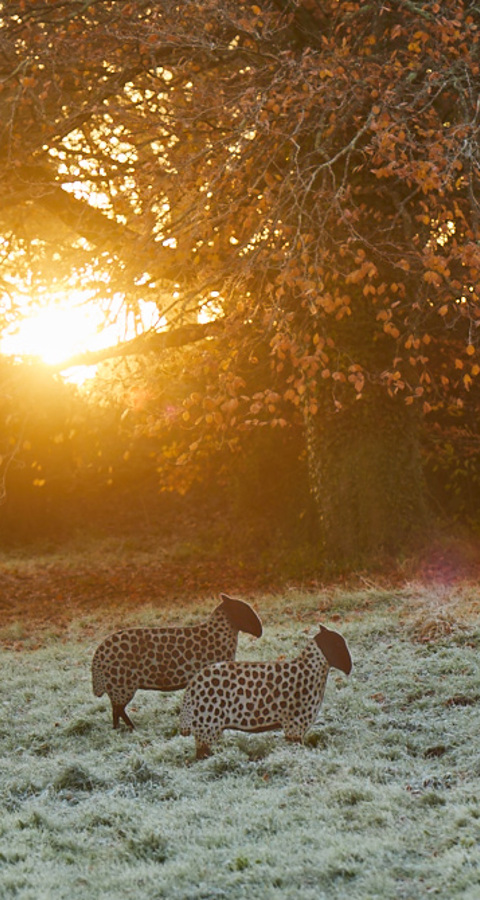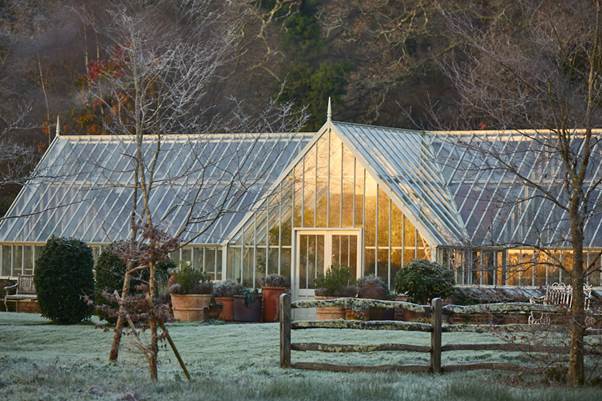Curated: Thoughtful Gifting for the Festive Season
There’s a special kind of magic at Curated during the festive season. To help inspire your Christmas gifting, our team has gathered a few of their favourite pieces this season.

Written by Sammie Longhorn, Lime Wood’s resident forager
Winter is a season that our culture finds hard to fully embrace. The need for rest, reflection, stillness and silence is at odds with our culture of perpetual productivity. In our world we can rely on the constant availability of the same fruits, herbs and vegetables in the supermarket, regardless of the season. This is totally at odds with how deeply affected the diets of our ancestors would have been by the turning of the wheel of the year.
I have a passion for seasonal living that goes far beyond what we eat. I like to lean into the natural order of more activity in the warmer months and more rest and reflection in the darker months.
The benefits of embracing the seasons are far ranging for our physical and mental health. In spring, we have incredible vibrant and detoxifying greens, summer brings the beauty and sweetness of early fruits and edible flowers. Then, in autumn, the reds and blacks of autumn fruits signal that they are full of antioxidants and flavonoids, perfect for boosting our immune system.
At this time of year, only the hardiest and bravest edibles grace our wild spaces. Whenever I find myself harvesting a handful of Chickweed, Sorrel or Herb Robert in the bleakest, coldest months, I always take a moment to think about how invaluable these harvests would have been to our forefathers.
However, just as our ancestors would have lived their lives entirely intertwined with the seasons, they would have all acquired the skills to sustain themselves and their families through the long, dark winters of the British Isles. There are a few simple techniques which you can master for wild food preparation and preservation and before long, you can have your very own wild larder.

Dried Herbs
Whenever I am drying wild herbs or greens, it is vital to create the opposite environment in which live plants would flourish: dark, cool and dry. You can hang hardier plants such as thyme and rosemary in bundles, you can invest in some drying racks or even store your plant material in paper or cloth bags. Whichever technique you choose, ensure the plants are not stored in direct sunlight, which can degrade the volatile oils. Also consider giving the plants lots of space so that air can circulate, reducing the chance of mould. These dried herbs should then be labelled, jarred, and can be used in cooking, herbal teas, or infused oils.
Infused Vinegars
One of my favourite folk remedy recipes is an infused vinegar. The acetic acid in apple cider vinegar acts as a solvent which extracts the medicinal properties of herbs. This really is the intersection of food and medicine as the infused vinegar is wonderful in salad dressings and as a final seasoning for soups and stews. Alternatively, you can take it as a spoonful mixed in hot water with honey as a powerful herbal remedy. My favourite infused vinegars include nettle, yarrow and elderberry.
Floral Sugar
The fleeting beauty of wild spring flowers can be captured for year-round use. Dandelions, violets and primroses can be blended with sugar and dehydrated on a very low heat. Many green herbs are excellent for this as well. My particular favourites are mint, lemon balm and pine needles. This can then be used in cakes, biscuits, or even to rim cocktail glasses.
Herbal Salt
Herbal salt is a very similar technique to infused sugar. A good sprinkle of thyme and rosemary infused salt to finish off meat or roast potatoes is absolutely delicious and also makes a great homemade gift.

Using a collection of these wild preparations, I like to make a simple, wild lunch. By blending some of the dried herbs with spices with some crushed foraged hazelnuts, I can make a Dukkah, a take on a North African spice blend. I then gather a dish of one of my herbal oils and a tablespoon or two of some fermented wild greens. I serve this with some sourdough; it is delicious and an incredibly nutritionally dense meal.
Building a winter store brings me a sense of peace and wellbeing, both when I am in the process of harvesting and preparing and then of course, a second time when I then eat from my stores. I recently opened some fermented fig honey that I had made in August, and it felt like a gift to myself, from myself, from those sun-drenched summer days.
Follow Sammie on Instagram: @thehedgerowyogi
Join Sammie on a foraging walk at Lime Wood: Event Details | Lime Wood
There’s a special kind of magic at Curated during the festive season. To help inspire your Christmas gifting, our team has gathered a few of their favourite pieces this season.

Delve beneath the surface (literally) to explore the fascinating world of microbiomes with Peigin Crowley, founder of Ground Wellbeing
Plan a romantic weekend in the New Forest at Lime Wood. Just under two hours from London, this laid-back luxury countryside escape offers serene spa time, forest walks, candlelit dining, and cosy hideaway rooms designed for two.